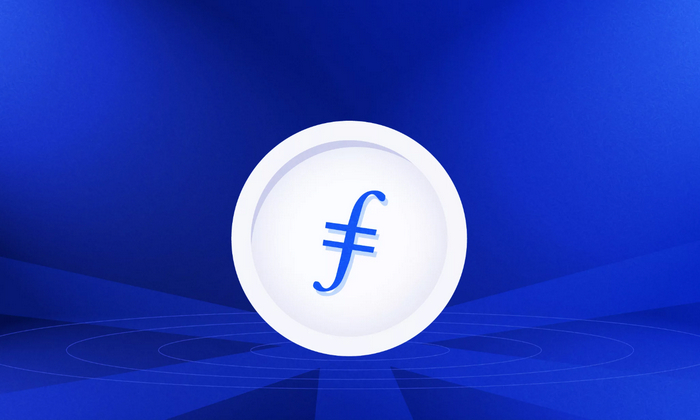-
 Bitcoin
Bitcoin $102,163.2697
6.02% -
 Ethereum
Ethereum $2,150.5881
19.90% -
 Tether USDt
Tether USDt $1.0002
-0.01% -
 XRP
XRP $2.2816
8.03% -
 BNB
BNB $621.9127
3.90% -
 Solana
Solana $160.9056
10.18% -
 USDC
USDC $0.9999
-0.01% -
 Dogecoin
Dogecoin $0.1919
12.84% -
 Cardano
Cardano $0.7428
12.87% -
 TRON
TRON $0.2549
2.81% -
 Sui
Sui $3.9413
20.96% -
 Chainlink
Chainlink $15.6333
15.00% -
 Avalanche
Avalanche $21.5896
11.76% -
 Stellar
Stellar $0.2857
10.70% -
 Shiba Inu
Shiba Inu $0.0...01415
12.36% -
 Bitcoin Cash
Bitcoin Cash $418.6912
17.25% -
 UNUS SED LEO
UNUS SED LEO $8.8588
1.73% -
 Pi
Pi $0.6406
10.47% -
 Hedera
Hedera $0.1918
10.27% -
 Toncoin
Toncoin $3.2151
7.17% -
 Hyperliquid
Hyperliquid $23.1281
10.85% -
 Litecoin
Litecoin $93.2866
5.66% -
 Polkadot
Polkadot $4.3578
11.64% -
 Monero
Monero $297.8483
6.26% -
 Dai
Dai $1.0002
0.00% -
 Bitget Token
Bitget Token $4.4492
5.91% -
 Ethena USDe
Ethena USDe $1.0003
-0.04% -
 Pepe
Pepe $0.0...01078
32.09% -
 Bittensor
Bittensor $417.8303
16.87% -
 Uniswap
Uniswap $5.6674
18.46%
can filecoin vs siacoin
Filecoin's Proof-of-Spacetime consensus and independent storage providers distinguish it from Siacoin's Proof-of-Work model and competitive host market, offering stronger decentralization but potentially higher storage costs.
Nov 06, 2024 at 07:13 pm

Filecoin vs Siacoin: An In-Depth Comparison of the Top Decentralized File Storage Solutions
The rapid advancement of digital technologies has led to an explosion of data, creating a growing demand for reliable and decentralized storage solutions. Filecoin and Siacoin have emerged as frontrunners in this space, offering secure and cost-effective alternatives to traditional cloud storage providers. This comprehensive analysis delves into the intricacies of these two platforms, exploring their features, advantages, and drawbacks to help you make an informed decision.
1. Storage Mechanism
Filecoin:
- Employs a distributed storage network comprising numerous independent storage providers.
- Data is broken down into small segments, encrypted, and stored across multiple providers.
- Each storage provider stakes FIL tokens as collateral to ensure data integrity and availability.
Siacoin:
- Utilizes a decentralized network of storage hosts offering varying levels of storage capacity.
- Data is encrypted and divided into 30 erasure-coded fragments stored on different hosts.
- Redundancy ensures data recovery even if some hosts become unavailable or malicious.
2. Proof-of-Work (PoW) vs Proof-of-Storage (PoSt) Consensus
Filecoin:
- Adopts a Proof-of-Spacetime (PoSt) consensus mechanism where storage providers prove they store data reliably over time.
- Requires miners to allocate a portion of their storage capacity and stake FIL tokens.
- Miners are rewarded for storing data safely and proving its availability through regular challenges.
Siacoin:
- Employs a Proof-of-Work (PoW) consensus model, similar to Bitcoin and Ethereum.
- Miners solve complex computational puzzles to create new blocks and secure the network.
- Miners are rewarded with Siacoin for their efforts.
3. Incentives and Penalties
Filecoin:
- Storage providers earn FIL tokens for storing data and proving its availability.
- Penalties are imposed for data loss or failure to meet storage commitments.
- Retrieval fees incentivize clients to retrieve data from storage providers and maintain network usage.
Siacoin:
- Hosts receive Siacoin for providing storage space and meeting performance targets.
- Renters must pay hosts in advance for storage and bandwidth usage.
- Penalties are imposed for hosts failing to store data reliably or renters exceeding their storage limits.
4. Storage Costs
Filecoin:
- Storage costs vary depending on the storage provider's location, reputation, and storage duration.
- Costs are typically higher than traditional cloud storage services but offer greater decentralization and data security.
Siacoin:
- Storage costs are generally lower than Filecoin due to the competitive nature of the storage hosting market.
- Costs fluctuate based on host availability, storage demand, and network conditions.
5. Decentralization
Filecoin:
- Boasts a highly decentralized network with thousands of independent storage providers globally.
- Data is distributed across multiple providers, eliminating single points of failure and censorship resistance.
Siacoin:
- Also features a decentralized network, but its storage hosts are predominantly located in China.
- While decentralized, the geographic concentration may pose potential geopolitical risks.
6. Data Security and Privacy
Filecoin:
- Data is encrypted and stored across multiple storage providers, ensuring data integrity and confidentiality.
- Filecoin's PoSt consensus incentivizes storage providers to maintain data availability and prevent tampering.
Siacoin:
- Data is encrypted client-side before being divided and stored on different hosts.
- The erasure coding scheme ensures data recovery even if some hosts become compromised.
Disclaimer:info@kdj.com
The information provided is not trading advice. kdj.com does not assume any responsibility for any investments made based on the information provided in this article. Cryptocurrencies are highly volatile and it is highly recommended that you invest with caution after thorough research!
If you believe that the content used on this website infringes your copyright, please contact us immediately (info@kdj.com) and we will delete it promptly.
- Ethereum (ETH) Price Surges Past $2,000 as Trump's Trade Deal and Pectra Upgrade Ignite Bullish Momentum
- 2025-05-09 05:25:12
- Cryptocurrency market pushes higher, buoyed by US-UK trade deal
- 2025-05-09 05:25:12
- Binance Coin (BNB) Outperforms the Altcoin Market, Setting New All-Time Highs
- 2025-05-09 05:20:12
- The U.S. legislation that would establish stablecoin regulation failed to take a huge step closer to reality
- 2025-05-09 05:20:12
- Unstaked Quietly Proves Why It May Be the Best Crypto Right Now
- 2025-05-09 05:15:12
- As the Bitcoin Price Drives Toward $150,000, the ripple effect across the altcoin market is already being felt.
- 2025-05-09 05:15:12
Related knowledge

What is Ethereum’s Slashing mechanism and how to punish malicious behavior?
Feb 20,2025 at 03:08am
Key PointsOverview of slashingDifferent types of slashing in EthereumIncentives and consequences of slashingIdentifying and reporting slashed validatorsOngoing discussions and potential improvementsEthereum's Slashing Mechanism: Punishing Malicious BehaviorEthereum's slashing mechanism is an essential tool for ensuring network security and punishing mal...

What is the verifier node of Ethereum and how to become a verifier?
Feb 19,2025 at 06:00pm
The Verifier Node of Ethereum: A Comprehensive GuideKey Points:What is a Verifier Node?How to Become a Verifier NodeResponsibilities and Rewards of a Verifier NodeMinimum Requirements for Becoming a Verifier NodePotential Difficulties in Running a Verifier Node1. What is a Verifier Node?A Verifier Node is an independent entity on the Ethereum network th...

What is Ethereum’s staking, and how to participate and earn money?
Feb 19,2025 at 04:37pm
Key Points:Understanding Ethereum's Staking MechanismSteps to Participate in StakingBenefits and Rewards of StakingSecurity and Risk ConsiderationsTechnical Requirements and Hardware OptionsPotential Challenges and Troubleshooting TipsFAQs on Ethereum StakingWhat is Ethereum's Staking?Proof-of-Stake (PoS) is a consensus mechanism used in blockchain netw...

What is Ethereum’s DAO (Decentralized Autonomous Organization) and how does it work?
Feb 20,2025 at 03:12am
Key PointsDefinition and Structure of a DAOGovernance and Decision-Making in DAOsBenefits and Use Cases of DAOsChallenges and Limitations of DAOsWhat is Ethereum's DAO (Decentralized Autonomous Organization) and How Does It Work?Definition and Structure of a DAOA Decentralized Autonomous Organization (DAO) is an innovative governance and management fram...

What is Ethereum's multi-signature wallet and how to improve security?
Feb 20,2025 at 02:18pm
Key Points:Understanding the Concept of a Multi-Signature WalletBenefits and Drawbacks of Multisig WalletsRequirements for Setting Up a Multisig WalletStep-by-Step Guide to Generating a Multisig WalletImplementing Strategies for Enhanced Security1. Understanding the Concept of a Multi-Signature WalletA multi-signature (multisig) wallet in the Ethereum e...

What is Ethereum's oracle and how to provide data for smart contracts?
Feb 21,2025 at 01:30am
Key Points:Understanding the concept of oracles in EthereumExploring different types of oraclesDetailed guide on how to provide data for smart contractsAddressing potential challenges and considerationsWhat is Ethereum's Oracle?Oracles are crucial components in the Ethereum ecosystem, enabling smart contracts to access real-world data and off-chain even...

What is Ethereum’s Slashing mechanism and how to punish malicious behavior?
Feb 20,2025 at 03:08am
Key PointsOverview of slashingDifferent types of slashing in EthereumIncentives and consequences of slashingIdentifying and reporting slashed validatorsOngoing discussions and potential improvementsEthereum's Slashing Mechanism: Punishing Malicious BehaviorEthereum's slashing mechanism is an essential tool for ensuring network security and punishing mal...

What is the verifier node of Ethereum and how to become a verifier?
Feb 19,2025 at 06:00pm
The Verifier Node of Ethereum: A Comprehensive GuideKey Points:What is a Verifier Node?How to Become a Verifier NodeResponsibilities and Rewards of a Verifier NodeMinimum Requirements for Becoming a Verifier NodePotential Difficulties in Running a Verifier Node1. What is a Verifier Node?A Verifier Node is an independent entity on the Ethereum network th...

What is Ethereum’s staking, and how to participate and earn money?
Feb 19,2025 at 04:37pm
Key Points:Understanding Ethereum's Staking MechanismSteps to Participate in StakingBenefits and Rewards of StakingSecurity and Risk ConsiderationsTechnical Requirements and Hardware OptionsPotential Challenges and Troubleshooting TipsFAQs on Ethereum StakingWhat is Ethereum's Staking?Proof-of-Stake (PoS) is a consensus mechanism used in blockchain netw...

What is Ethereum’s DAO (Decentralized Autonomous Organization) and how does it work?
Feb 20,2025 at 03:12am
Key PointsDefinition and Structure of a DAOGovernance and Decision-Making in DAOsBenefits and Use Cases of DAOsChallenges and Limitations of DAOsWhat is Ethereum's DAO (Decentralized Autonomous Organization) and How Does It Work?Definition and Structure of a DAOA Decentralized Autonomous Organization (DAO) is an innovative governance and management fram...

What is Ethereum's multi-signature wallet and how to improve security?
Feb 20,2025 at 02:18pm
Key Points:Understanding the Concept of a Multi-Signature WalletBenefits and Drawbacks of Multisig WalletsRequirements for Setting Up a Multisig WalletStep-by-Step Guide to Generating a Multisig WalletImplementing Strategies for Enhanced Security1. Understanding the Concept of a Multi-Signature WalletA multi-signature (multisig) wallet in the Ethereum e...

What is Ethereum's oracle and how to provide data for smart contracts?
Feb 21,2025 at 01:30am
Key Points:Understanding the concept of oracles in EthereumExploring different types of oraclesDetailed guide on how to provide data for smart contractsAddressing potential challenges and considerationsWhat is Ethereum's Oracle?Oracles are crucial components in the Ethereum ecosystem, enabling smart contracts to access real-world data and off-chain even...
See all articles




















































































